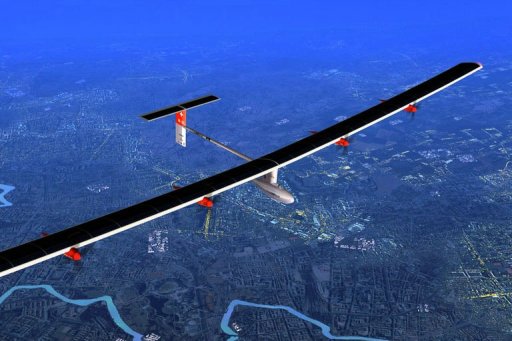A Swiss adventurer aims to make the world’s first intercontinental flight in a solar-powered plane Tuesday, taking off from Madrid shortly before dawn on a daring trip to Rabat.
Bernard Piccard, 54-year-old psychiatrist and balloonist, is to pilot the Solar Impulse plane, a giant as big as an Airbus A340 but as light as an average family car, from Europe to Africa.
With 12,000 solar cells in the wing turning four electrical motors, his team hopes he will take off from Madrid-Barajas airport at 5:30am (0330 GMT) and guide the plane to 3,600 metres (11,800 feet).
He then heads to Seville in southern Spain, crosses the Gibraltar Strait at 8,500 metres (28,000 feet), enters Moroccan airspace over Tangiers and lands in Rabat-Sale some time after 11pm (2200 GMT).
All that, without using a drop of fuel.
Each of the motors on the carbon-fibre plane charges 400-kilogram (880-pound) lithium polymer batteries during the day, allowing the airfraft to carry on flying after dark.
Piccard, who made the world’s first non-stop round-the-world balloon flight in 1999 together with Briton Brian Jones, takes over the controls from project co-founder Andre Borschberg, a 59-year-old Swiss executive and pilot.
Borschberg flew a first leg from Payerne in Switzerland, landing in Madrid on May 25.
Organisers said the trip, 2,500 kilometres (1,550 miles) overall, is timed to coincide with the launch of construction on the largest ever solar thermal plant in Morocco’s southern Ouarzazate region.
The trip also is intended as a rehearsal for the plane’s round-the-world flight planned for 2014.
The aircraft made history in July 2010 as the first manned plane to fly around the clock on the sun’s energy.
It holds the record for the longest flight by a manned solar-powered aeroplane after staying aloft for 26 hours, 10 minutes and 19 seconds above Switzerland, also setting a record for altitude by flying at 9,235 metres (30,298 feet).

COMMENTS
Please let us know if you're having issues with commenting.